STEPS
INGREDIENTS

Use a heavy pot with close fitting lid - enamelled cast iron is ideal. Place on a medium heat.
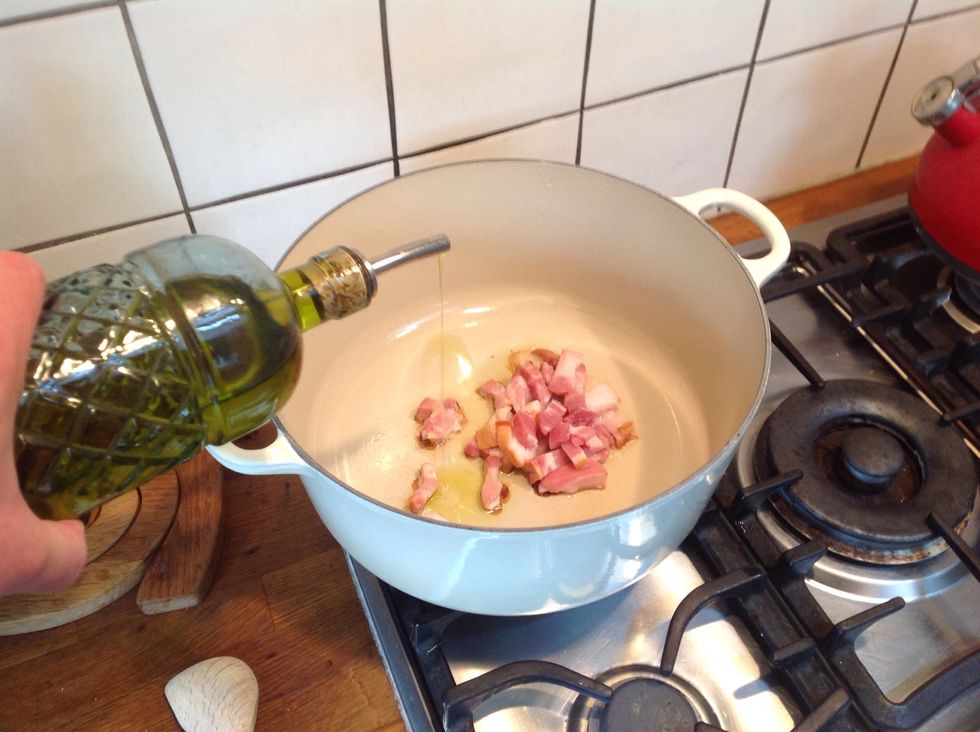
Add lardons or bacon, smoked or unsmoked, get them in the pan first to brown and render the fat out to help the other ingredients colour. I have helped it get started by drizzling a little oil in.

Next the onions to colour a little. Pay attention to any bits sticking on the bottom of the pan, reduce the heat if it begins to burn.
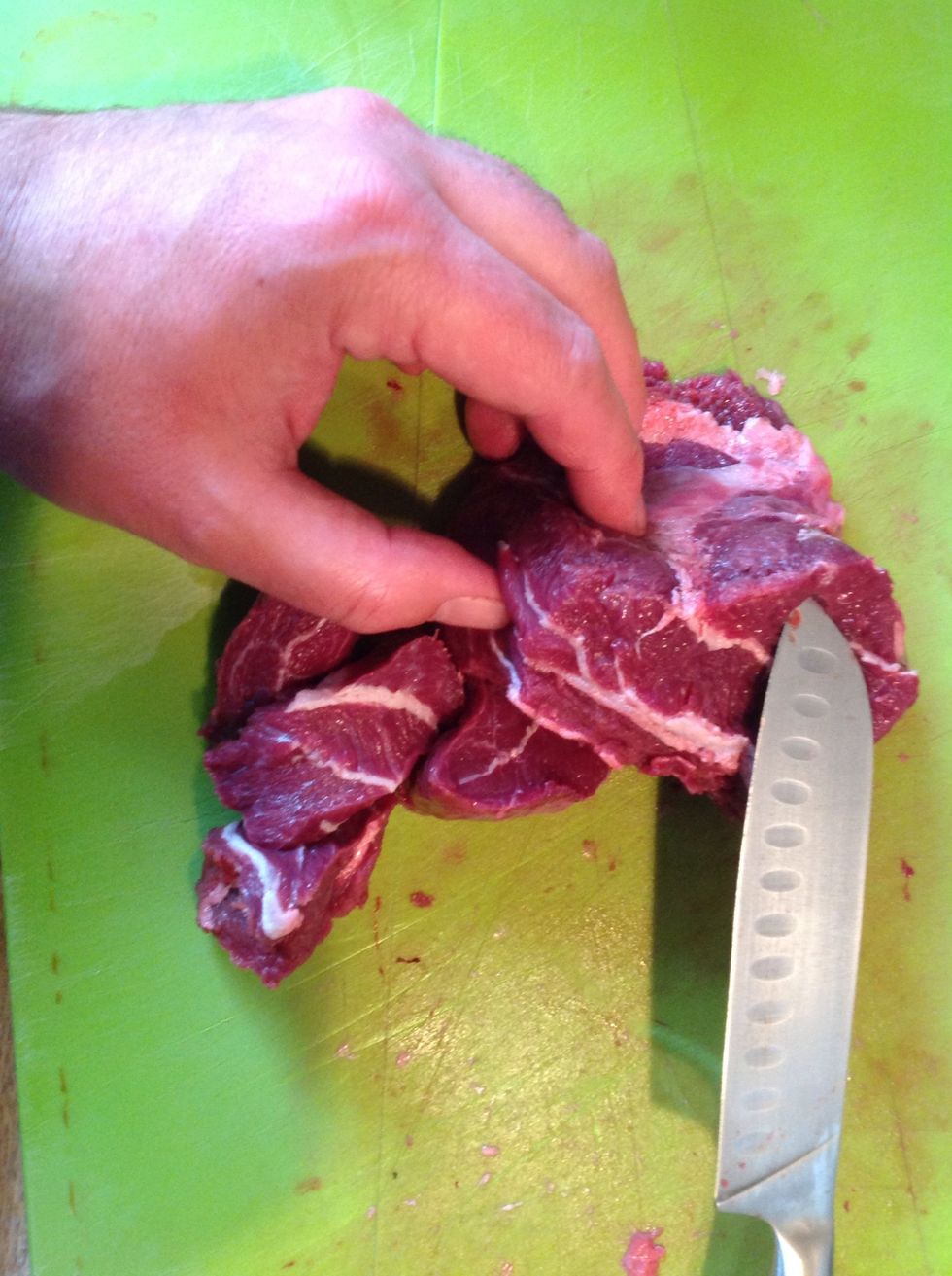
Chop the beef. Note that the beef cheek used here has plenty of connective tissue that makes it perfect for slow cooking. Any excess fat can be skimmed off later.
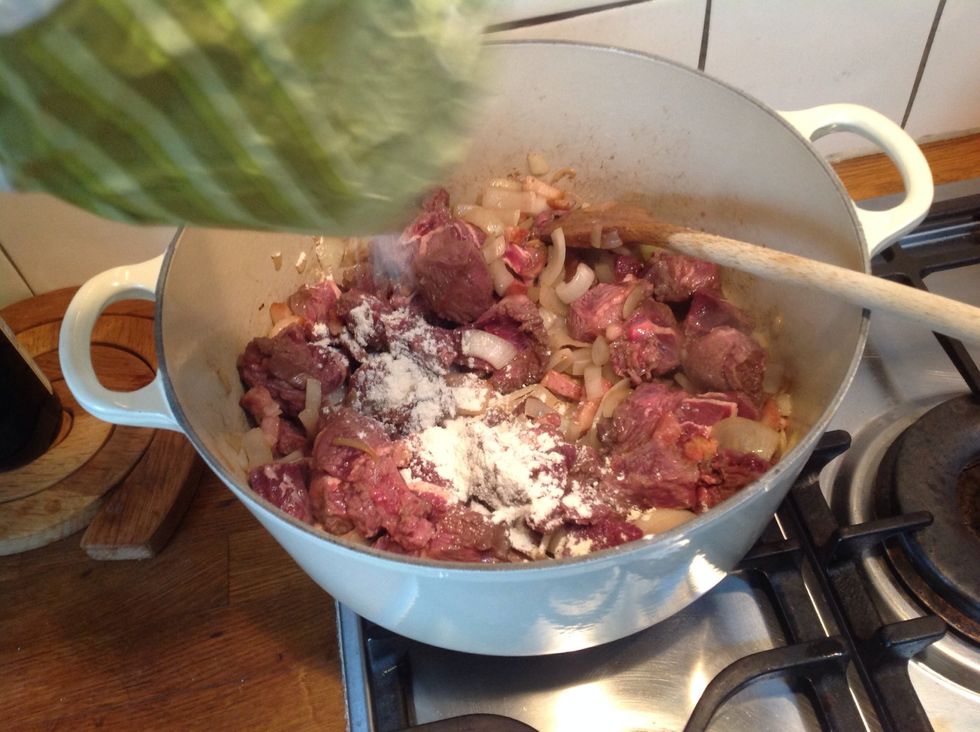
Brown the meat then add the flour, this will aid in slightly thickening the daube.

Now add the carrots and herbs, here I am using thyme and bay leaf.
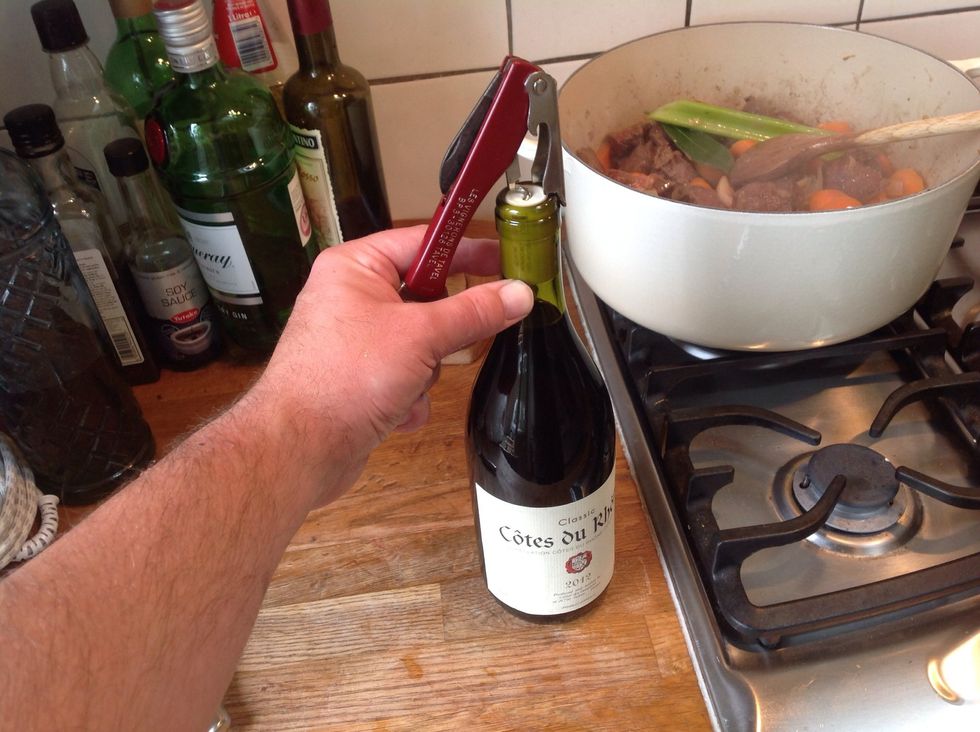
A whole celery stick is added (for later removal), then the wine.
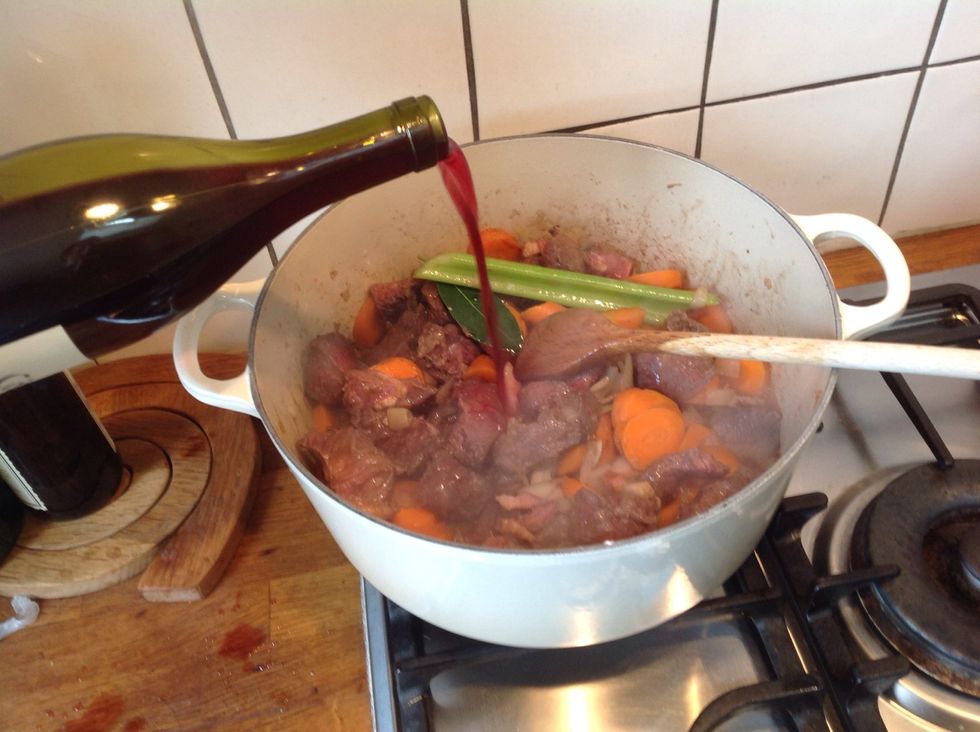
Here I am using a Cotes du Rhone, for this anything medium bodied, fruity but un-oaked should be good.
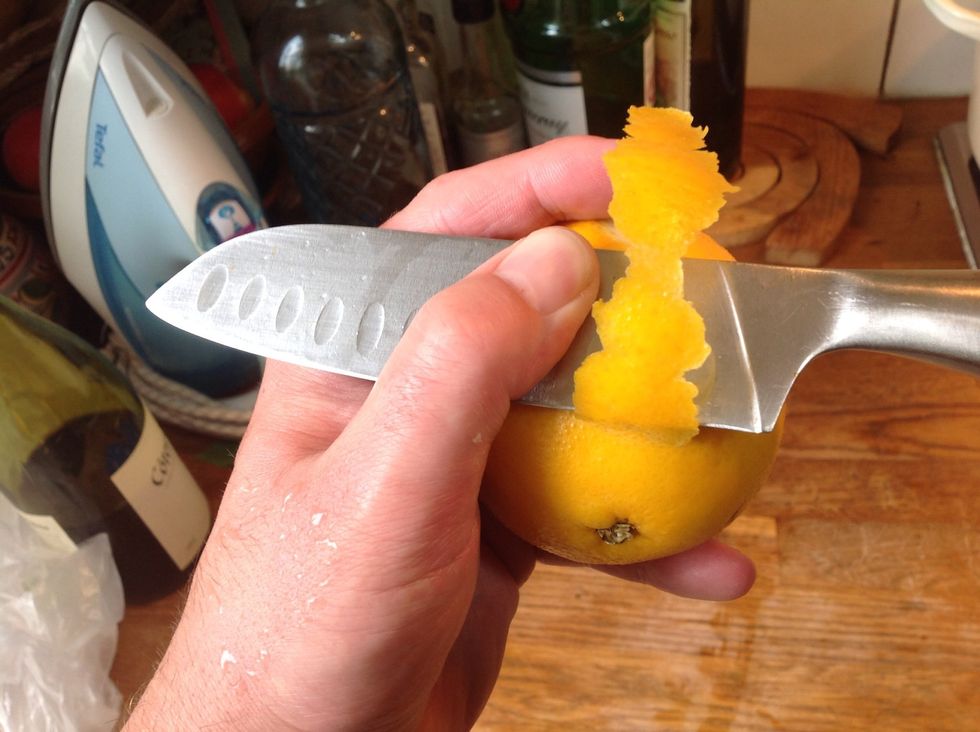
Now peel a, say, 2 inch strip from the orange. Peel so you avoid the pith as much as possible and wash the orange first especially if not organic.

Peel and chop the garlic and add to the daube. The daube will cook for a long time so don't worry about chopping too finely.
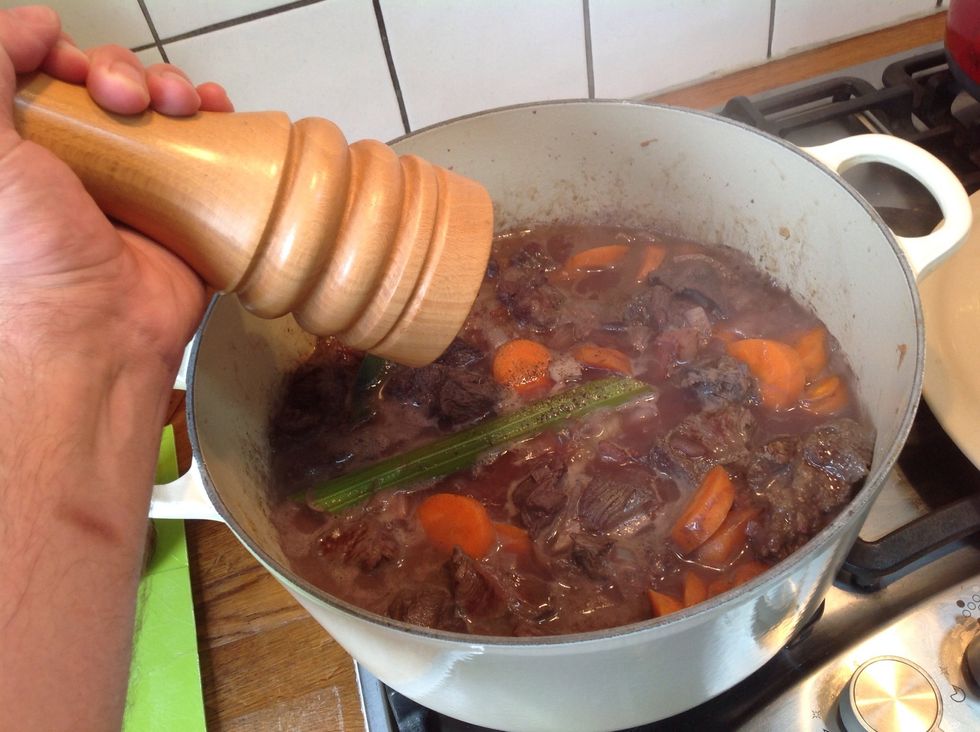
Season. Better to season sparingly now and adjust later to taste. Let the wine come to the boil then turn down the heat after a couple of minutes to let it simmer and cover with the lid.
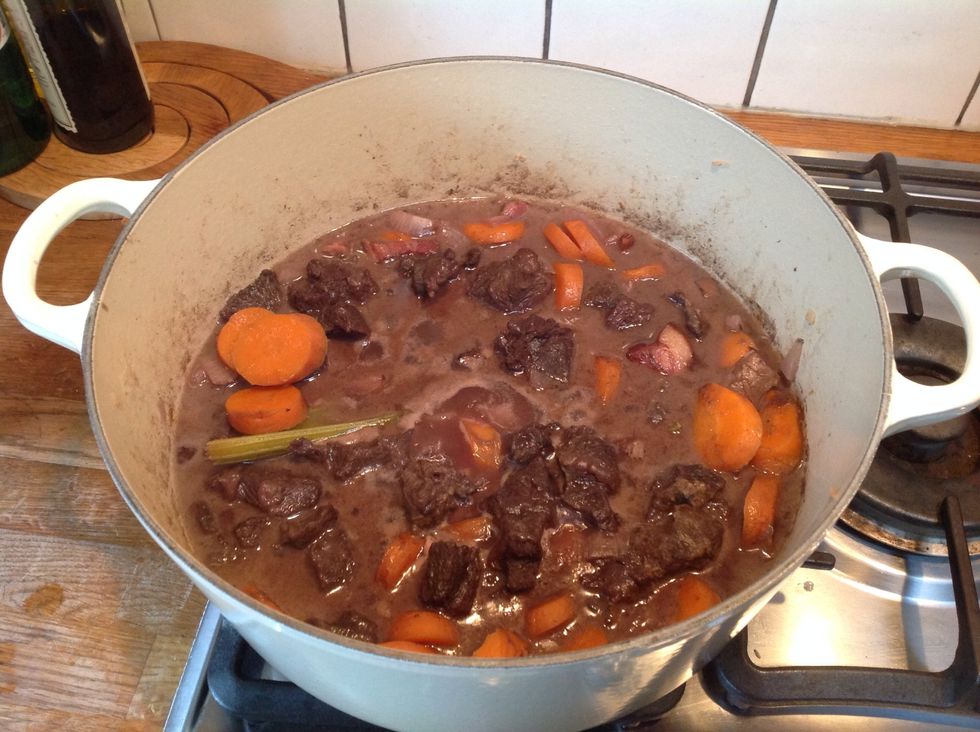
The meat will darken in colour as it slowly simmers and the wine colour will mellow. Leave for about 1.5-2 hours, keeping an eye and giving an occasional stir.
Finally, add the olives about 5 minutes before the end of cooking adjust the seasoning. Remove the thyme sprigs etc. Serve with macaroni dressed in butter sprinkle with Gruyere or emmental cheese.
- 1.0kg Cheek of beef or other economical cut (3cm cubes)
- 100.0g Lardons or bacon cut up in suitable pieces
- 2.0 Onions chopped roughly
- 3.0 Cloves garlic, roughly chopped or sliced
- 3/4 Bottle of red wine (medium bodied un-oaked)
- 4.0 Carrots cut into rounds
- 1.0 Piece of orange peel approx. 10cm long
- 1.0Tbsp Oil (olive oil or sunflower)
- 1/2Tbsp Plain flour
- Stick of celery, bay leaf and sprig of thyme
- 12 or so purple or black ( not Greek style) olives
- macoroni or other suitable small pasta or tagliatelle
The Conversation (0)
Sign Up